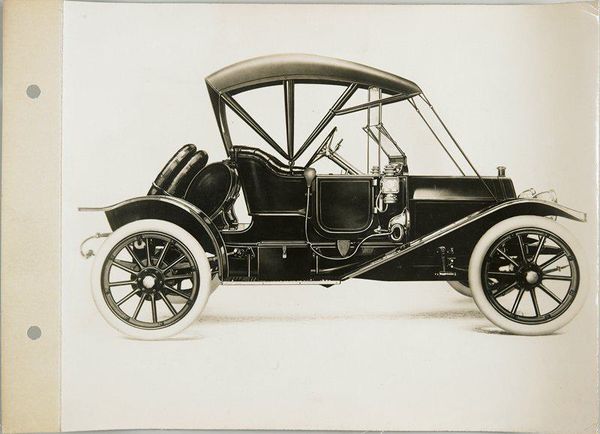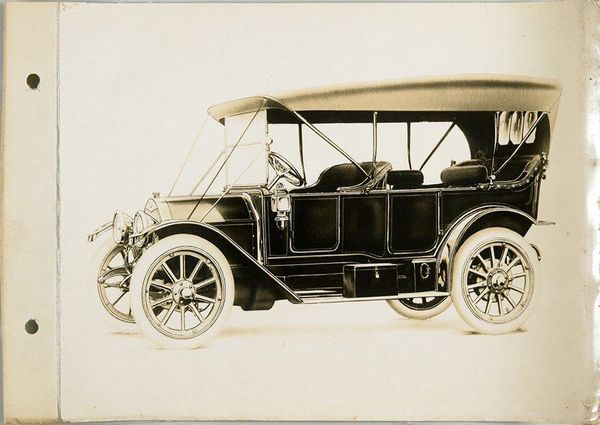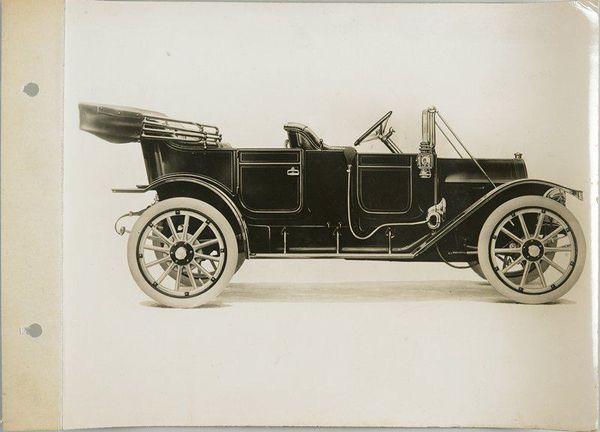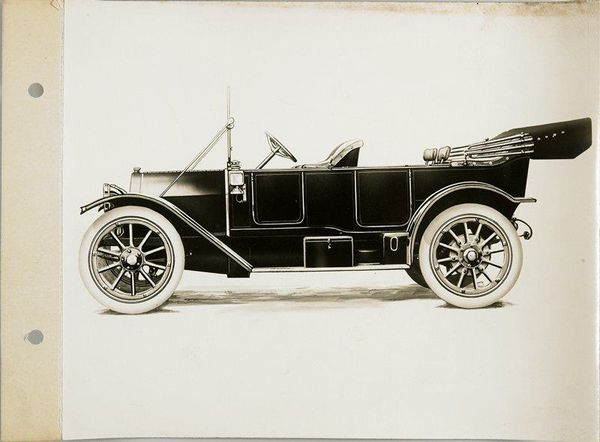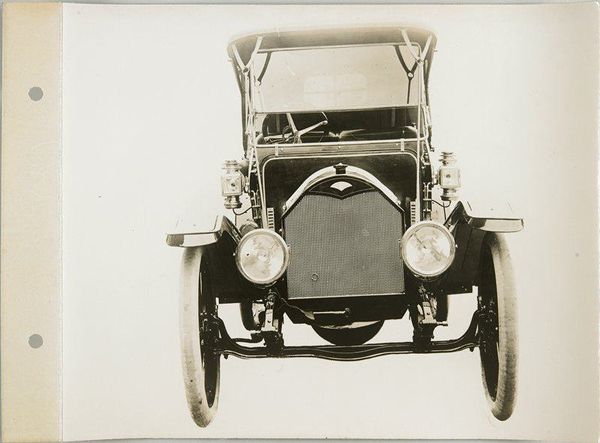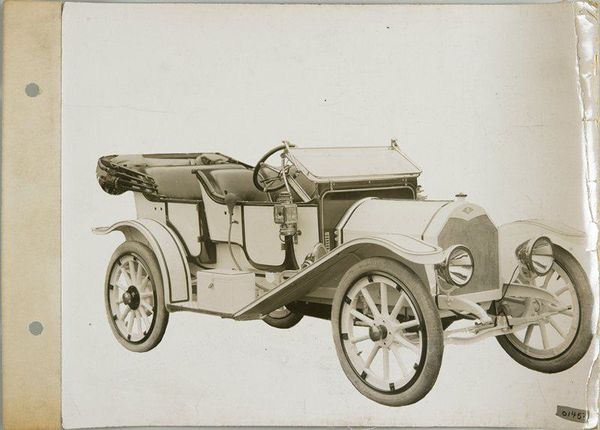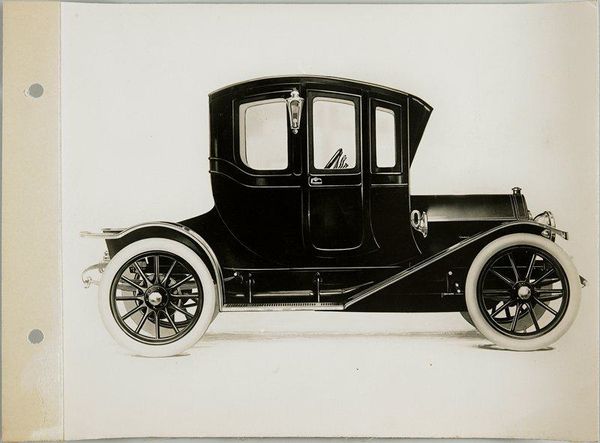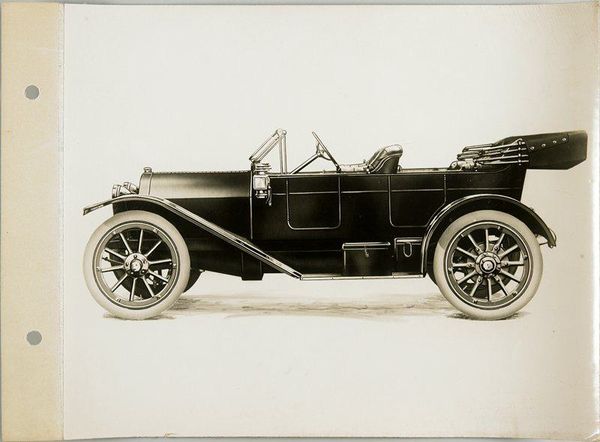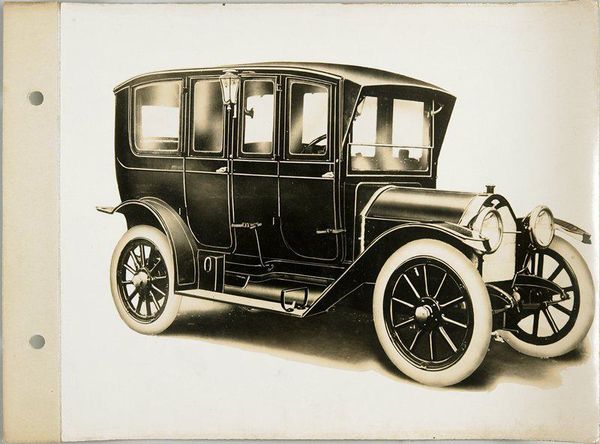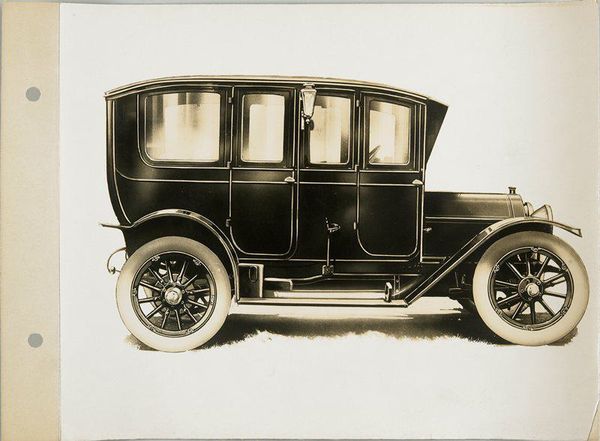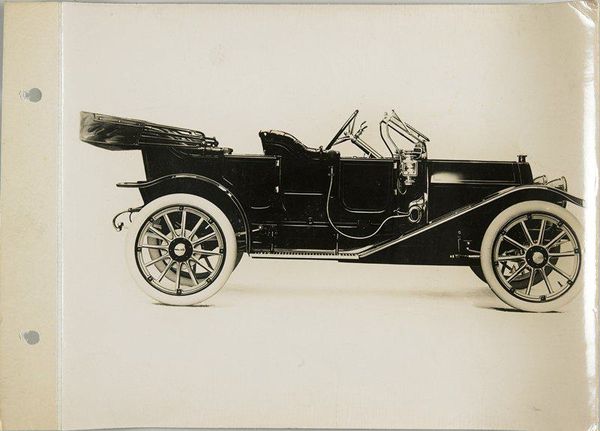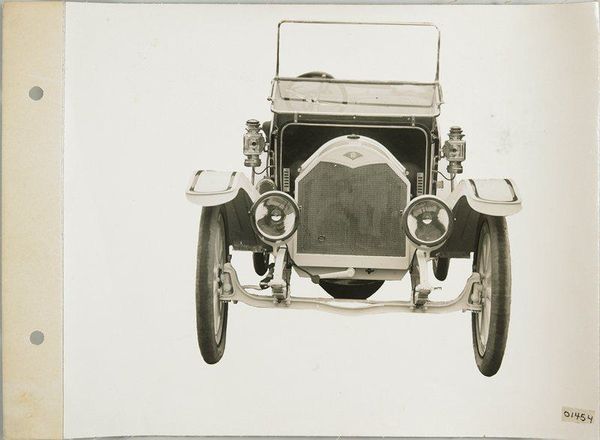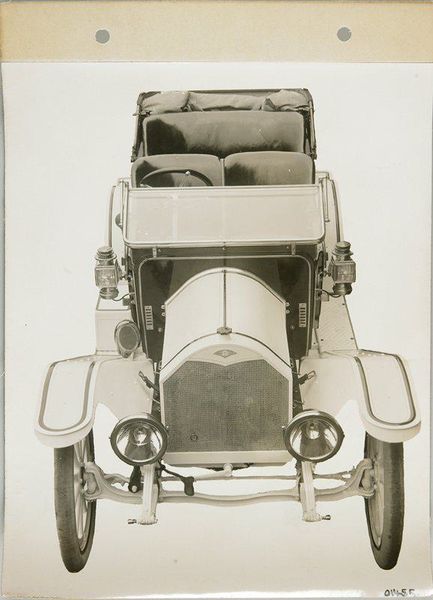
gelatin-silver-print, photography, gelatin-silver-print
#
still-life-photography
#
gelatin-silver-print
#
photography
#
geometric
#
gelatin-silver-print
#
united-states
#
realism
Dimensions: 7 7/16 x 9 1/8 in. (18.89 x 23.18 cm) (image)7 7/16 x 10 3/16 in. (18.89 x 25.88 cm) (mount)
Copyright: No Copyright - United States
Editor: We're looking at an untitled gelatin silver print, a photograph made around 1911 by Spooner & Wells. The subject matter is a vintage automobile. It's so crisp and clean. What do you see in this piece? Curator: What I see here is more than just a photograph of an automobile; it’s a potent symbol of early 20th-century America’s burgeoning love affair with industrialization and mobility. This image, captured in gelatin silver, presents a very particular narrative—one of privilege, progress, and perhaps even exclusion. Who benefitted from this new technology, and who was left behind? What societal shifts did its production and availability trigger? Editor: That's an interesting perspective. I hadn’t really considered those inequalities. Do you think Spooner & Wells were actively trying to make a statement about that? Curator: Maybe. Or, at the very least, this photograph inadvertently documents the beginning of a complex relationship between technology, social class, and the environment. Look closely. The car is pristine, presented almost as an object of desire. But think about the resources needed to create this machine, and the environmental impact even in 1911. These cars represented individual freedom, but only for some. The photograph also hints at the labor required to make such objects accessible. Does knowing that make you see anything new in the photograph? Editor: Definitely. It’s no longer just a beautiful image; it makes me question the cost of this “progress." Considering the context of labour rights movements at the time, it gives the picture another layer. Curator: Precisely! Thinking about it this way encourages us to look deeper and see art as a form of cultural and political commentary. It reflects existing paradigms and power dynamics in society. Editor: Thanks, that has helped me realize how art can be interwoven with cultural forces, more than meets the eye. Curator: It works as a powerful visual statement; art prompts conversations that we may overlook if we do not contextualize them.
Comments
No comments
Be the first to comment and join the conversation on the ultimate creative platform.
